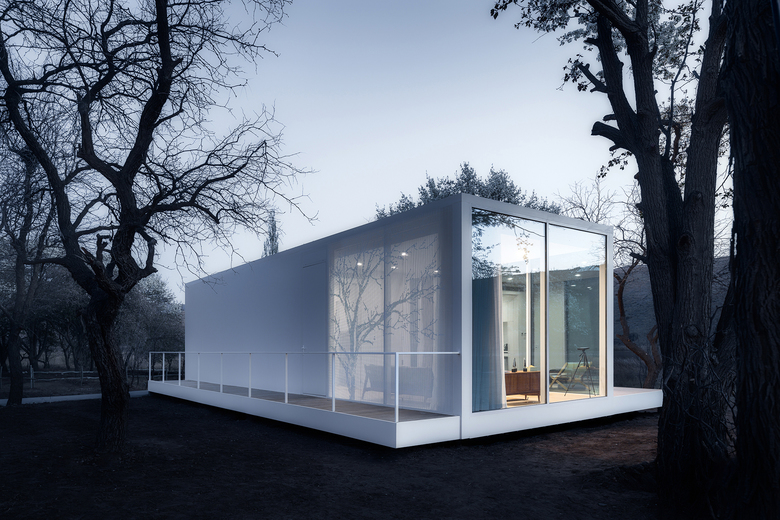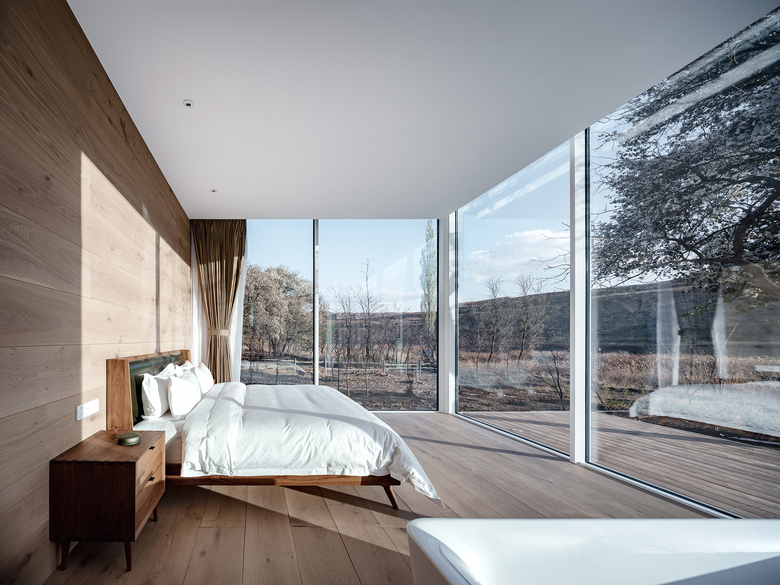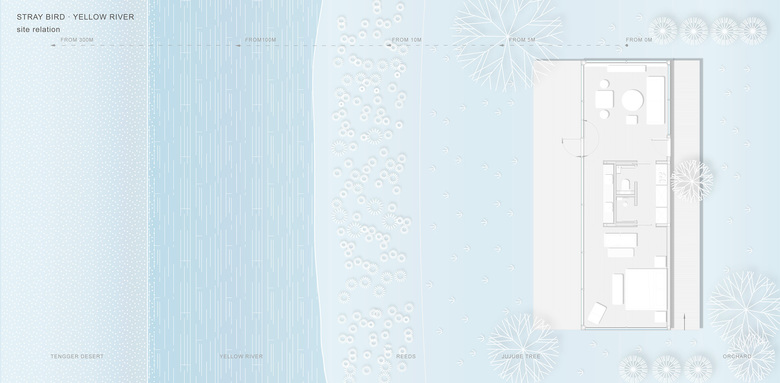Boxy Relaxation in the Desert
Eduard Kögel
2. September 2019
Photo: ©Qingshan Wu
China has a variety of natural landscapes ranging from dry sandy deserts to tropical islands and snow-capped mountains. Little by little, places are discovered and then developed so as to be suitable for tourism projects. Depending on the location or concept, large infrastructures or exclusive boutique hotels with special amenities are established. In the case of the Stray Bird project, Studio Qi from Hangzhou has set a unique example for how to blend into the landscape in a special way.
Lead Architect: Shanshan Qi
Project Team: Mengfan Zhou, Yuting Zhao, Ping Yang, Xinhua Ban (Intern)
Name of Client: STRAY BIRD
Floor Area: 400sqm
Completion date: 01/01/2019
Structure Manufacture: Zhongpu Construction Technology, Co., LTD
Curtain Wall: ERIC Construction Technology, Co., LTD
Interior Construction: UHJOH
Furniture Design: Lastisland
Project address: SUJI Yellow River, Dawan Village, Changle Town, Shapotou
City: Zhongwei, the Ningxia Hui Autonomous Region
Postcode: 755000
Country: China
Photographer: Qingshan Wu
Project URL: http://t.cn/Etrm0PO
Photo: ©Qingshan Wu
The Yellow River is almost 5,000 kilometers long, making it the second longest river in China. It originates in the Tibetan highlands and flows to the Yellow Sea, crossing several provinces including the Ningxia Hui Autonomous Province. Ningxia is relatively dry with some deserts, including the Tengger Desert in Shapotou, where this project locates. Along the river are oases with trees that contrast with the surrounding sand dunes.
Photo: ©Qingshan Wu
Studio Qi has built a small complex of four self-contained hotel ‘units’ along a large bend in the river. Designed as orthogonal boxes, the units are positioned in an old orchard, within sight of the river, and are connected to the nearby village by a footpath. In contrast to the traditional regional architecture of rammed earth, the architects in this instance attempt to define future parameters with their use of an ecological, but prefabricated and heavily-glassed construction.
Photo: ©Qingshan Wu
Situated in this unique landscape, the small hotel offers a new type of connection to the rural context and slow lifestyle that has long been lost in the booming cities. Prefabrication, both as a planning and construction strategy, offered a variety of solutions to most of the challenges and difficulties of construction in rural, western China. The boxes, measuring 14 x 4.5 meters, are modularly designed with a steel frame-construction. The rear wall is closed, while on the other three sides a glass façade system is used to allow unobstructed views of the landscape. A terrace to the front of the main façade leads into the natural terrain. Elements of ornamentation on the back wall of each box contain motifs of pear trees, reeds, date palms and birds set within perforated metal panels.
Photo: ©Qingshan Wu
The units are subdivided into three zones. In the middle is the bathroom core with a small fitted kitchen, on either side of which are the sleeping area with bed and the living room with sofa and seating area. As the architects show in their plans, the prefabricated units can be assembled differently to form L- or U-types. The units stand on platforms that float slightly above the ground on point foundations. The white color of the outer skin and the floating character intensify the visual contrast with the old trees.
Photo: ©Qingshan Wu
The inner atmosphere is determined by the natural surface of cedar wood wall and floor paneling – which also continues on the terrace outside. Room-high curtains regulate the transparency of the units. These elegant and minimalist furnishings offer the stressed middle class of the cities a recuperation retreat, which today is more necessary than ever.
Photo: ©Qingshan Wu
Photo: ©Qingshan Wu
Photo: ©Qingshan Wu
Situation
Related articles
-
Tangshan Quarry Park Wins Rosa Barba Prize
on 11/29/23
-
The Qinchang Village Town Hall
on 10/21/21
-
Banu Restaurant
on 8/26/21
-
Shou County Culture and Art Center
on 4/1/20














